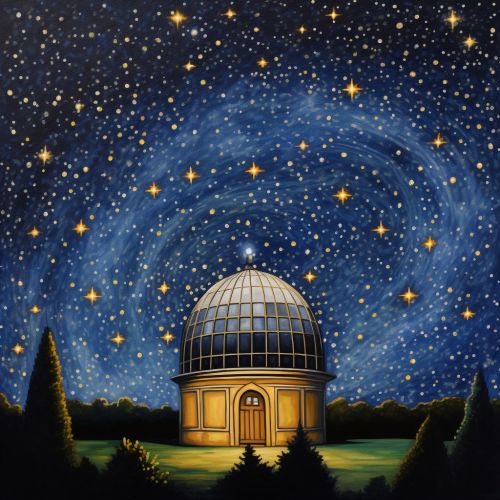Astronomical Observatories
History of Astronomical Observatories
Astronomical observatories have a long and storied history, with the earliest known examples dating back to ancient civilizations. The ancient Egyptians, for example, are known to have built structures that allowed them to observe the night sky and track the movements of celestial bodies. These early observatories were often associated with religious or cultural practices, and their findings were used to develop calendars and navigate the seas.


In the Middle Ages, the development of astronomy as a scientific discipline led to the construction of more sophisticated observatories. These structures were often part of universities or other institutions of learning, and they were equipped with the latest astronomical instruments of the time. The Oxford University's Radcliffe Observatory, for example, was completed in 1794 and is still in use today.
The 19th and 20th centuries saw a boom in the construction of astronomical observatories, thanks in large part to advances in technology. The invention of the telescope and other observational instruments allowed astronomers to observe celestial bodies with unprecedented detail, leading to a wealth of new discoveries.
Types of Astronomical Observatories
There are several different types of astronomical observatories, each designed to observe different aspects of the universe.
Optical Observatories
Optical observatories are perhaps the most well-known type of astronomical observatory. These observatories are equipped with telescopes that observe light in the visible spectrum. Some of the most famous optical observatories include the Hubble Space Telescope and the Keck Observatory in Hawaii.


Radio Observatories
Radio observatories, on the other hand, observe the universe in the radio spectrum. These observatories are often equipped with large radio antennas or arrays of antennas, which allow them to detect radio waves from distant celestial bodies. The Arecibo Observatory in Puerto Rico and the Very Large Array in New Mexico are examples of radio observatories.
Space Observatories
Space observatories are observatories that are located in space, away from the Earth's atmosphere. These observatories can observe the universe without the interference of the Earth's atmosphere, which can distort or block certain types of light. The Chandra X-ray Observatory and the Spitzer Space Telescope are examples of space observatories.
The Role of Astronomical Observatories
Astronomical observatories play a crucial role in our understanding of the universe. They allow astronomers to observe celestial bodies and phenomena, collect data, and conduct research. This information can then be used to develop theories about the nature of the universe, the origins of celestial bodies, and the laws of physics that govern the cosmos.
Observatories also play a key role in the discovery of new celestial bodies and phenomena. For example, the discovery of the planet Neptune was made possible by observations made at the Berlin Observatory. Similarly, the discovery of the first extrasolar planets was made possible by observations made at the Haute-Provence Observatory in France.


In addition to their scientific role, astronomical observatories also have an educational role. Many observatories are open to the public and offer educational programs and events. These programs can help to inspire a love of astronomy and science in general, and can also provide valuable hands-on experience for students and aspiring astronomers.
Future of Astronomical Observatories
The future of astronomical observatories is bright, with many exciting developments on the horizon. New technologies and instruments are constantly being developed, allowing astronomers to observe the universe in ever greater detail. In addition, the construction of new observatories, both on Earth and in space, promises to open up new avenues of research and discovery.
One of the most exciting developments in the field of astronomy is the construction of the Extremely Large Telescope (ELT) in Chile. When completed, the ELT will be the largest optical/near-infrared telescope in the world, and will allow astronomers to observe the universe with unprecedented detail.


In addition to new observatories, there are also exciting developments in the field of observational instruments. For example, the development of adaptive optics technology allows telescopes to correct for the distortion caused by the Earth's atmosphere, resulting in clearer and more detailed images.
